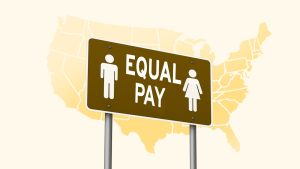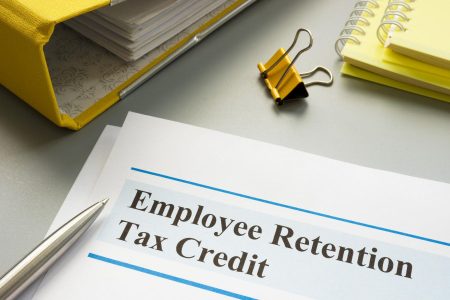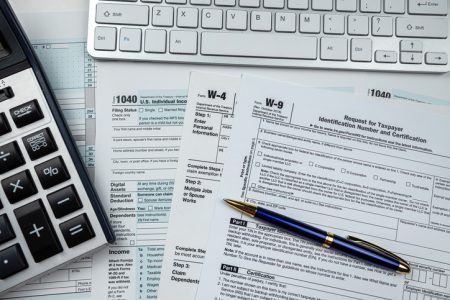The Trump-backed tax plan currently advancing through Congress could bring meaningful changes to how education expenses for homeschoolers are treated under federal tax law. Passed in the House on May 22, 2025, the “One Big Beautiful Bill Act” includes several provisions that indirectly benefit homeschooling families through expanded tax credits and savings opportunities. While it does not establish a direct tax credit exclusively for homeschoolers, it significantly broadens the financial tools families can use to support alternative education paths, including homeschooling.
A financial advisor can help families evaluate how these proposed changes may affect their personal tax strategy or long-term education savings goals.
- The new Trump tax bill introduces a federal tax credit for donations to scholarship-granting organizations, which can fund homeschooling expenses.
- It expands 529 plan rules to allow tax-free use of funds for a wide range of homeschool-related costs, such as curriculum and tutoring.
- While not a direct tax credit for homeschoolers, the bill reflects Trump’s broader agenda supporting school choice and parental control over education.
Trump Tax Plan: Potential Tax Benefits for Homeschooling Families
While the proposed legislation does not establish a direct federal tax credit for families who homeschool, it introduces two significant provisions that could provide indirect financial support. These provisions broaden access to educational funding and expand allowable uses of existing tax-advantaged accounts.
Tax Credit for Donations to Scholarship Granting Organizations
A key element of the proposed tax plan is the introduction of a federal tax credit for individuals who donate to certified scholarship-granting organizations. Section 25F of the bill allows taxpayers to claim a dollar-for-dollar credit, up to a specified cap, for contributions that fund K–12 education scholarships. The maximum credit depends on a taxpayer’s income, and is capped at either $5,000 or 10% of income, whichever is greater.
These scholarships can be used by families, including those who homeschool, to pay for qualified educational expenses, such as:
- Tuition and fees
- Curriculum and instructional materials
- Books and educational content
- Online courses
- Tutoring services from qualified professionals
- Standardized test fees
- Dual enrollment classes
- Educational therapies such as speech or occupational therapy
The legislation makes clear that these scholarships may be used for students in “a homeschool (whether treated as a homeschool or a private school for purposes of applicable State law).” The result is broader accessibility for most homeschooling families.
How Does It Compare With the Current Law:
Under current federal law, there is no provision for a federal tax credit for contributions to scholarship-granting organizations. Such credits are generally available only at the state level in certain jurisdictions.
Furthermore, while some states offer tax incentives for donations to school choice programs, federal tax law does not provide a parallel mechanism that directly or indirectly benefits homeschooling families. This proposed credit would represent a new federal avenue for funding homeschool expenses through third-party scholarships.
Expanded Use of 529 Education Savings Accounts for Homeschooling Expenses

The bill also proposes a substantial expansion of what constitutes a “qualified education expense” under Section 529 education savings plans. While these plans have traditionally been used for postsecondary education, and more recently for limited K–12 tuition expenses, the legislation would significantly broaden their scope.
According to Section 110110 of the bill, families would be allowed to use 529 funds, without incurring taxes or penalties, for a wide variety of K–12 costs, including:
- Homeschool curriculum and materials
- Online educational programs
- Tutoring by credentialed professionals
- Standardized test fees
- Costs of dual enrollment college courses
- Educational therapies
The proposed language specifically includes homeschool expenses, even if a homeschool is not formally classified as a private school under state law. This ensures broader applicability across different state regulatory environments.
How Does It Compare With the Current Law:
The proposed change would, for the first time at the federal level, treat a wide range of homeschool-related expenditures as qualified uses of 529 funds. That offers more flexibility and financial relief for homeschool families.
Alignment With Trump’s Education and School Choice Promises
The proposed tax plan would fulfill some campaign and administrative promises made by President Donald J. Trump to expand educational freedom and empower parents. While the legislation itself focuses on tax incentives rather than direct regulatory action, its provisions align closely with the priorities outlined in the January 30, 2025, Executive Order on educational opportunity.
Reinforcing Parental Control and School Choice
In the Executive Order, President Trump stated, “Parents, not the government, play a fundamental role in choosing and directing the upbringing and education of their children.” The proposed legislation mirrors this philosophy by giving families more financial flexibility in customizing their children’s education, particularly through tax-advantaged mechanisms that support homeschooling and private education.
- The tax credit for donations to scholarship-granting organizations advances the administration’s goal of expanding K–12 scholarship programs at the state level. This mirrors the Executive Order’s directive for the Department of Education to “issue guidance on how the States can use federal funding formulas to support their K-12 scholarship programs.”
- The expanded use of 529 accounts for homeschooling expenses builds upon a Trump-era tax change that first allowed families to withdraw up to $10,000 annually from 529 plans for K–12 tuition. The current proposal goes further by broadening qualified expenses to include homeschool curriculum, materials, tutoring, and other non-tuition costs — something not currently covered under federal law.
Delivering on Past Legislative Proposals
The tax elements in the proposed bill also echo earlier Trump-backed initiatives like the Education Freedom Scholarships and Opportunity Act and the School Choice Now Act. While those measures did not advance in Congress, the new proposal represents a legislative continuation of the same policy vision: to redirect education funding toward students and families rather than systems.
Additionally, the Executive Order called on multiple federal agencies — including the Departments of Education, Defense, Health and Human Services, and the Interior — to create actionable plans for expanding educational alternatives. Though the proposed tax legislation operates through the IRS rather than those agencies, it similarly aims to broaden access to educational options through financial incentives.
Broader Strategic Consistency
Finally, the proposal complements the Trump campaign’s ongoing emphasis on measurable educational outcomes and cost-effective solutions. The White House fact sheet noted that “school choice has proven to be cost effective and saves taxpayer dollars.” By leveraging tax credits and existing savings mechanisms like 529 plans, the bill aims to incentivize private contributions and parental investment without significantly increasing federal education spending.
In sum, while the proposed tax plan does not replicate the exact provisions of past executive orders or legislative attempts, it is aligned with the broader policy objective of “ensuring every child has the opportunity to receive a world-class education,” as stated by the Trump Administration. For homeschooling families, the proposal marks a meaningful extension of federal support through indirect but impactful financial tools.
Bottom Line

Although the current proposal does not offer a stand-alone federal tax credit for homeschooling families, it introduces two major enhancements: a new credit for donations to scholarship-granting organizations and expanded access to 529 education savings accounts for homeschool-related expenses. These changes align with President Trump’s ongoing push for school choice and parental empowerment, reflecting both past campaign promises and executive actions. As tax policy continues to evolve, a financial advisor can help families take full advantage of any available tax benefits for education.
Tax Planning Tips
- If you are looking for ways to lower your tax liability, a financial advisor who specializes in tax planning can help optimize your finances. Finding a financial advisor doesn’t have to be hard. SmartAsset’s free tool matches you with vetted financial advisors who serve your area, and you can have a free introductory call with your advisor matches to decide which one you feel is right for you. If you’re ready to find an advisor who can help you achieve your financial goals, get started now.
- If you want to know how much your next tax refund or balance could be, SmartAsset’s tax return calculator can help you get an estimate.
Photo credit: ©iStock.com/dragana991, ©iStock.com/Cn0ra, ©iStock.com/BartekSzewczyk
Read the full article here









